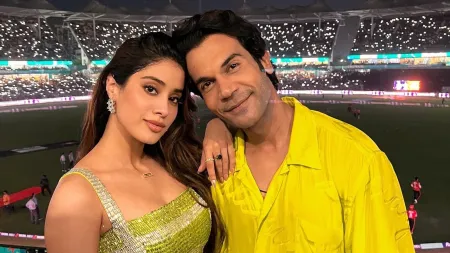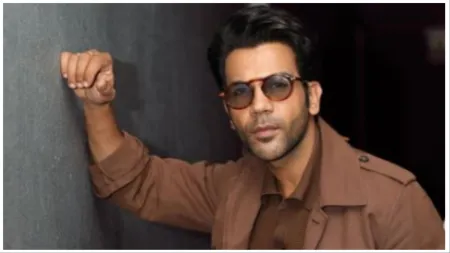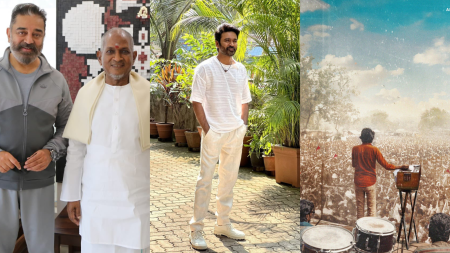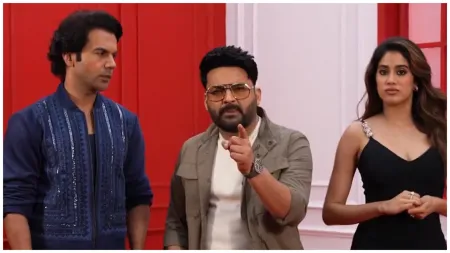Cinema purists have always had a disdain for songs. Tracks with the lead couple dancing with a gang with synchronized choreography are a laughing matter for these purists. Coupled with such condescension and Hollywoodification of Indian cinema, songs are finding little space here. Situational songs and the set songs have become archaic and things that induce frowns. Amidst the changing times, we have Mani Ratnam, who continues to own songs like no other filmmaker in Tamil cinema.
For Ratnam, songs are not impediments that affect realistic cinema, but an incredible tool that aids it. The director goes out of his way to use songs in films even if he doesn’t have enough runtime to tell an entire five-part story like Ponniyin Selvan. One of the biggest criticisms of Ponniyin Selvan 1 is that it was cramped, a valid criticism. However, even with such constraints, Ratnam was adamant about having as many as five songs in the film, and how!

“Ratchasa Maamaney” is a brilliant example of how Mani Ratnam uses songs as a tool to take the story forward. The song establishes Palayarai as a heaven and brings Kundhavai (Trisha) into the fold who gets smitten by Vandhiythevan (Karthi) instantly. All of this is effortlessly established in a song that’s an enactment of Hiranyakashyap’s story. Contrary to the belief that songs would take up the runtime, here it saves time. What was about hundreds of pages in the book was reduced to just five minutes in the film.
In an interview with Peter Webber, a British film and television director, Ratnam shared his take on songs. “I think, once you accept it (songs and dance) as part of your film, then it is a very liberating process. It does something very unique to an Indian film. In the flow of the film, songs make you reach an arc of celebration or sorrow or any other expression… songs let you achieve it abstractly. You are not bound by logic or literary movement. It lets you fly and land back at a completely different point. It lets you express what’s in someone’s head differently. I think it is a very liberating thing.”
He added, “I think it comes out of the oral tradition in India. Over the years, we have been passing on stories orally. All epics are passed on like that. There will be verses in between and with music… growing up hearing all this helps you navigate the story easily. I feel very sad that you guys (British) don’t have that (laughs).”
The transition he is talking about, which brings out the emotion of people without a single uttered word is achieved with such an impeccable perfection in Alaipayuthe’s “Evano Oruvan”. Shakthi (Shalini) breaks up with Karthik (Madhavan) after their families have an ugly spat discussing their potential marriage. She leaves for her medicine training in a remote village, and Karthik leaves too, in search of her. The song, with lyrics by Vairamuthu, brings out the yearning of Shakthi for Karthik. She is never really present in the hospital camp. She is lost only to be found when Karthik arrives in front of her. It is hard to come up with any scene dialogue or other screenplay tool to achieve what “Evano Oruvan” achieves. The screenplay has suddenly moved from a place of conflict (between the lead pair) to a place of resolution, where the two have decided to be together even if it is hell or high water.
Mani Ratnam doesn’t come up with an excuse to have a song in his films, like most mainstream filmmakers. Even his frequent collaborator, writer Sujatha was averse to having songs. In an essay about writing the screenplay for the film Kannedhirey Thondrinal, Sujatha writes how he had to come up with a flimsy reason to place “Salomia”. The writer’s words were laden with utmost apprehension for songs.
Yet, his beloved friend Mani Ratnam has no qualms about the unique element of Indian cinema. In fact, he owns it up and wears it as a medal of honour. If not, we wouldn’t get gems like “Keda Kari” from Ravanan, which is the rage party of the oppressed. And we would have dearly missed the unique and intriguing choreography of “Adiye” from Kadal. What a terrible miss it would have been!
Disclaimer: The copyright of this article belongs to the original author. Reposting this article is solely for the purpose of information dissemination and does not constitute any investment advice. If there is any infringement, please contact us immediately. We will make corrections or deletions as necessary. Thank you.







